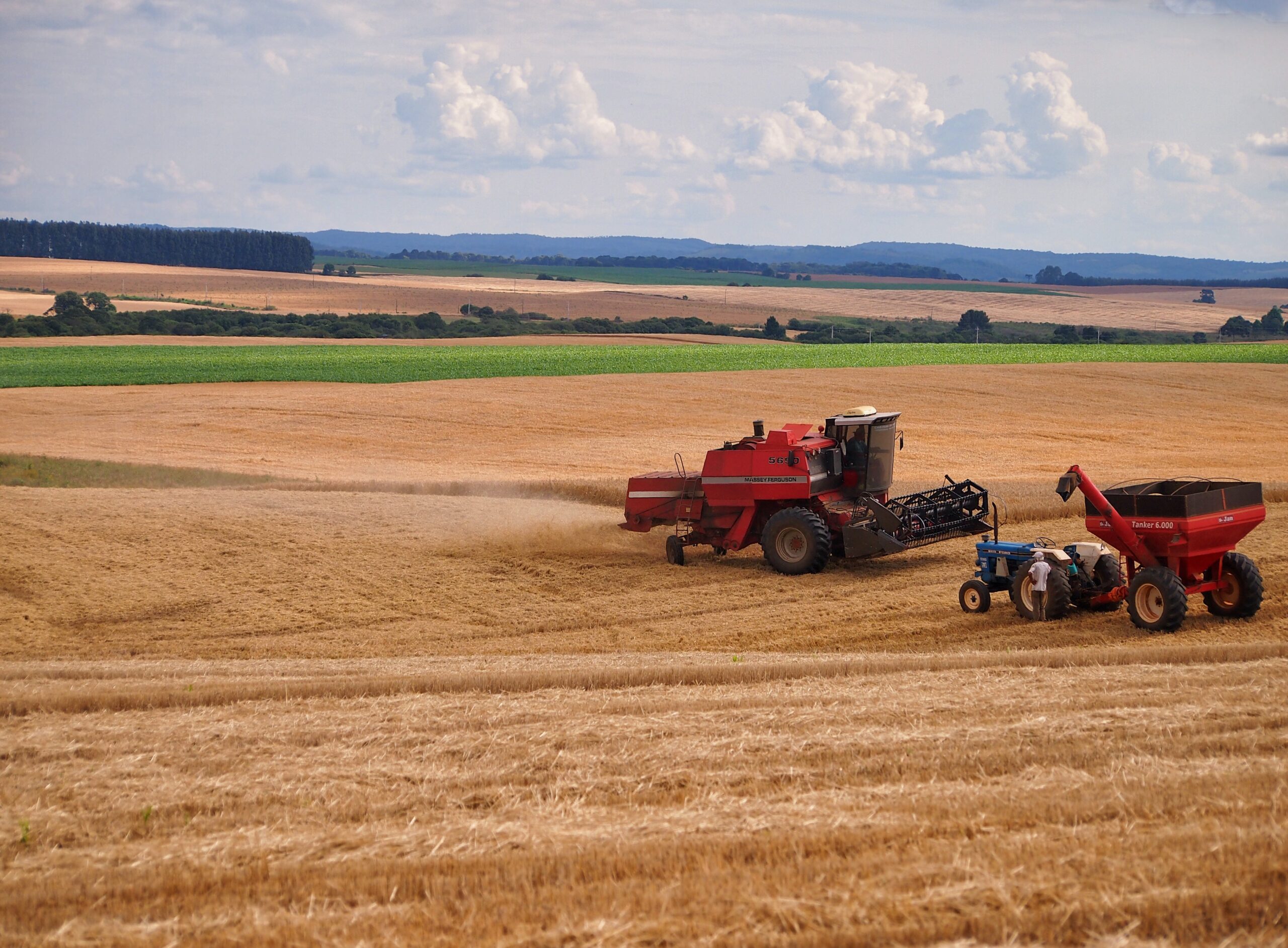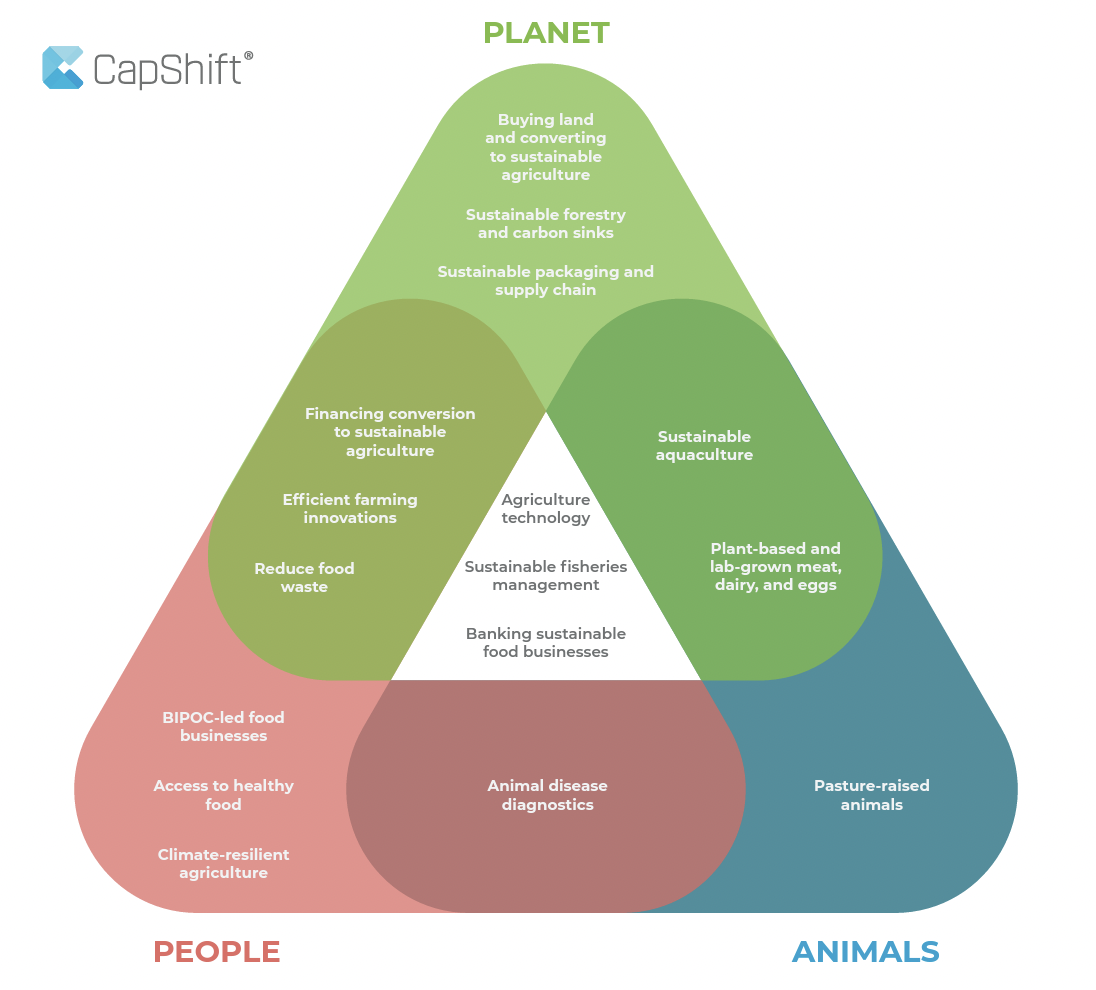
Our food and agriculture system has many problems. They include climate change, economic opportunity, health and nutrition, animal welfare, and more, but fortunately for every problem there may be various solutions. As outlined in CapShift’s recently published, “Building a Food & Agriculture Focused Portfolio”, grants may help progress these solutions with funding, policy may support critical social infrastructure like crop insurance and other support programs, investments may play a unique role in supporting impact through efforts like farm loans, land acquisition, and investments in new technology.
In between charitable and investment capital lies another solution, recoverable grants, which have the potential to be a transformative tool in the global food and agriculture system, seeking to achieve the ultimate goal: that the three interconnected pillars of our food system – planet, people, and animals operate in a way that is sustainable and equitable.

Recoverable grants enable pioneering and flexible approaches to attempt to solve the human inequities and environmental injustices within our global food and agriculture system. These innovations may provide individuals and communities in our global food system with equitable capital to level the playing field for food access or to support the transition to regenerative farming practices.
Recoverable grants have the potential to be particularly impactful because, under the right conditions, they can be recycled for future grantmaking, which allows donors to pursue big impact. Recoverable grants can help advance solutions to our interconnected global food and agriculture supply system, from farming, processing and distribution to consumption and waste recovery in a few uniquely additive ways:
1. Bridge essential timing gaps
Recoverable grants can bridge the timing gap from when dollars are needed to finance critical purchases, like seeds or equipment, to when farmers see revenue at the end of a harvest season. Short-term crop loans may be available to some, such tools are not at the ready disposal for many, especially smallholder farmers in the global south.
One example is a fund that works with millions of smallholder farmers to equip them with the supplies and training they need to thrive. This fund uses recoverable grants to bridge the timing gap between when revenue is collected from buyers and when agricultural inputs are purchased before planting season begins.
2. Provide low-cost, patient loan capital
For nonprofit lenders, recoverable grants can provide de-risked capital that helps lower the cost of capital across the supply chain from farmers, packagers, producers, to small business food establishments.
For example, one organization uses recoverable grant capital to support loans to women and BIPOC-led food businesses across the United States with the aim of growing community health and wealth through sustainable sustenance. Recoverable grants allow the fund to provide flexible financing to small businesses, with a focus on organizations that are women-led and BIPOC-led.
3. Scale catalytic innovation
Recoverable grants can also support new, untested models, either by supporting innovation through technology, or in the case of one organization, new models for deep systems change. Of all private US agricultural land, white people account for 98% of acreage, while a majority of the 2.4 million farmworkers in the US are people of color who do not own or operate farms of their own. This organization helps BIPOC farms reclaim agency through capital redistribution; political advocacy; knowledge transfers, influence across the agriculture system.
To do this, the organization uses recoverable grants to deploy ‘reparative capital’ to BIPOC farmers. Accessing capital can be challenging for many BIPOC farmers due to the agricultural financial sector’s reluctance to take on the risks of smallholder farmers of color and their transitions to regenerative farming practices.
Recoverable grants have the potential to be a powerful tool that donors can use to complement their grantmaking and other impact investing efforts. They aim to support some of the most exciting innovations in our complex food and agriculture. Reach out to us at hello@capshift.com to learn more about ways to use recoverable grants.

